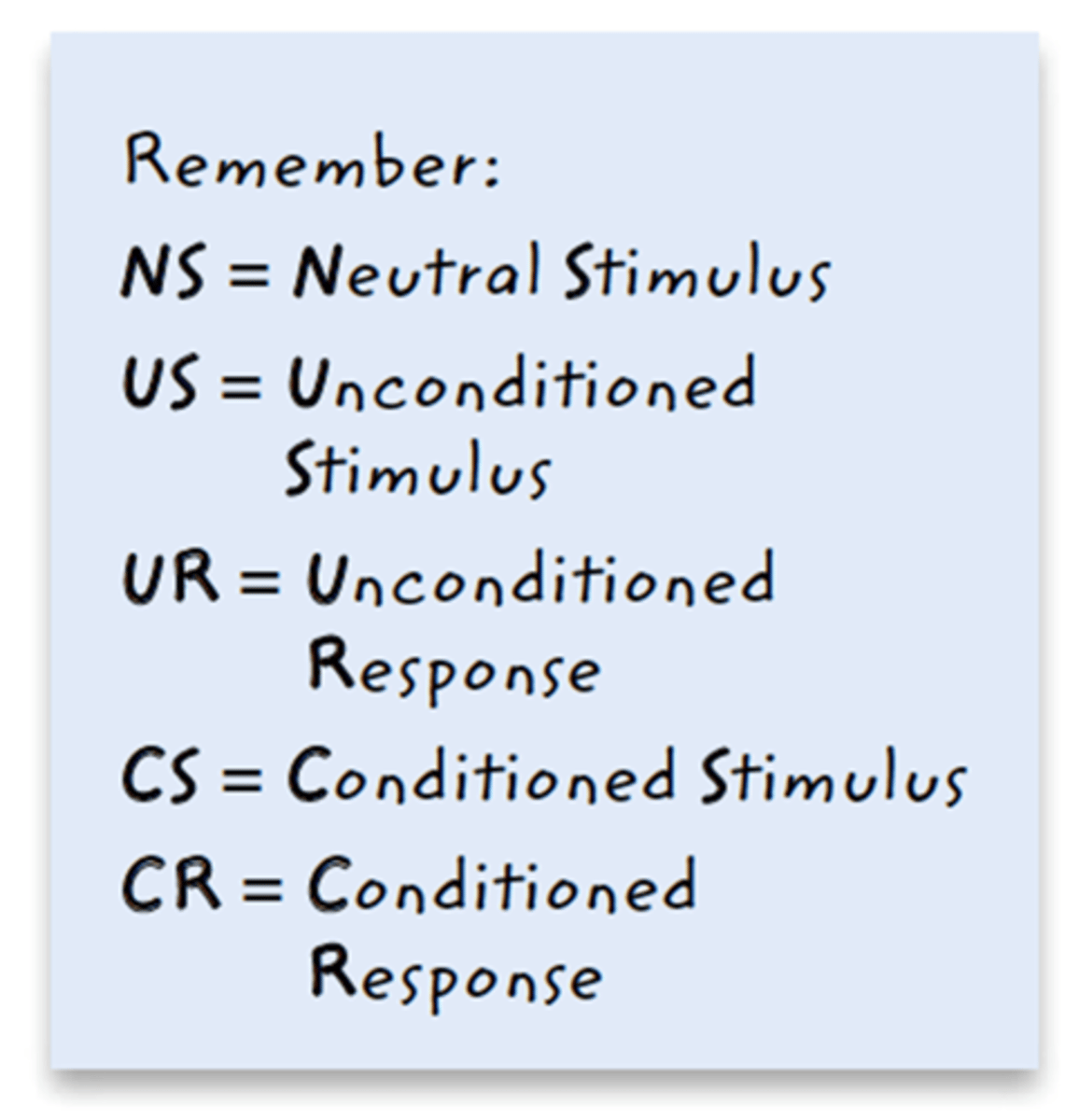PSY 200-General Psychology Psychology in Everyday Life Chapters 5 & 6 Study Guide
1/46
There's no tags or description
Looks like no tags are added yet.
Name | Mastery | Learn | Test | Matching | Spaced |
|---|
No study sessions yet.
47 Terms
Punishment
any event or object that, when following a response, makes that response less likely to happen again
Shaping
learning that results from the reinforcement of successive steps to a final desired behavior
Learning
the process of acquiring new and relatively enduring information or behaviors
Who conducted Little Albert experiment?
John B. Watson and Rosalie Rayner
Know that John B Watson
considered himself to be a behaviorist
Discrimination
unjustifiable negative behavior toward a group and its members
Operant conditioning
the learning of voluntary behavior through the effects of pleasant and unpleasant consequences to responses
Unconditioned stimulus
in classical conditioning, a stimulus that unconditionally—naturally and automatically—triggers a response.
Sensory adaptation
tendency of sensory receptor cells to become less responsive to a stimulus that is unchanging
Gestalt
an organized whole that is perceived as more than the sum of its parts.
Absolute threshold
the minimum stimulation needed to detect a particular stimulus 50/half, percent of the time
positive reinforcer
any stimulus that, when presented after a response, strengthens the response
Gustation
the sensation of taste
Know about Albert Bandura and his experiment
the Bobo doll experiment, observational learning.
Classical conditioning
a type of learning in which one learns to link two or more stimuli and anticipate events
Negative Punishment
taking away a pleasant stimulus to decrease or stop a behavior
Positive Punishment
the administration of a stimulus to decrease the probability of a behavior's recurring
Unconditioned response
In classical conditioning, the unlearned, naturally occurring response to the unconditioned stimulus (US), such as salivation when food is in the mouth.
Sensation
the process by which our sensory receptors and nervous system receive and represent stimulus energies from our environment
Who is most associated with operant conditioning?
B.F. Skinner
Neutral stimulus
in classical conditioning, a stimulus that elicits no response before conditioning
Generalization
the tendency, once a response has been conditioned, for stimuli similar to the conditioned stimulus to elicit similar responses, a conclusion drawn from specific info that is used to make a broad statement.
Modeling
the process of observing and imitating a specific behavior
Latent learning
learning that occurs but is not apparent until there is an incentive to demonstrate it
Perception
the process of organizing and interpreting sensory information, enabling us to recognize meaningful objects and events
Observational learning
learning by observing others; also called social learning
Bottom up processing
analysis that begins with the sensory receptors and works up to the brain's integration of sensory information
Stimulus
a signal to which an organism responds
Primary reinforcer
an innately reinforcing stimulus, such as one that satisfies a biological need
Rods
retinal receptors that detect black, white, and gray; necessary for peripheral and twilight vision, when cones don't respond
Spontaneous recovery
the tendency of a learned behavior to recover from extinction after a rest period
Olfaction
sense of smell
Conditioned stimulus
a stimulus that elicits a response only after learning has taken place
Just noticeable difference
the minimal change in a stimulus that can just barely be detected
Negative reinforcer
an unpleasant stimulus whose removal leads to an increase in the probability that a preceding response will be repeated in the future
Top-down processing
information processing guided by higher-level mental processes, as when we construct perceptions drawing on our experience and expectations
Cochlea
a coiled, bony, fluid-filled tube in the inner ear through which sound waves trigger nerve impulses
Conditioned response
in classical conditioning, the learned response to a previously neutral stimulus
Sensory receptors
Specialized cells unique to each sense organ that respond to a particular form of sensory stimulation.
Perceptual set
a mental predisposition to perceive one thing and not another
Fovea
the central focal point in the retina, around which the eye's cones cluster. tiny pit or depression.
Operant behaviors
behavior that operates on the environment, producing consequences
Know Pavlov's experiment
Classical Conditioning

Skinner Box
A small enclosure in which an animal can make a specific response that is systematically recorded while the consequences of the response are controlled.
Retina
the light-sensitive inner surface of the eye, containing the receptor rods and cones plus layers of neurons that begin the processing of visual information
Visual information is processed by which kind of cells and detectors
Receptor rods, and cones,/ Bipolar cells and Ganglion cells
Bobo doll experiment
nursery school students observed an adult play aggressively (yelling & hitting) with an inflatable clown (Bobo); when children were later allowed to play with the Bobo, those children who witnesses the Bobo doll performed the same aggressive actions and improvised new ways of playing aggressively